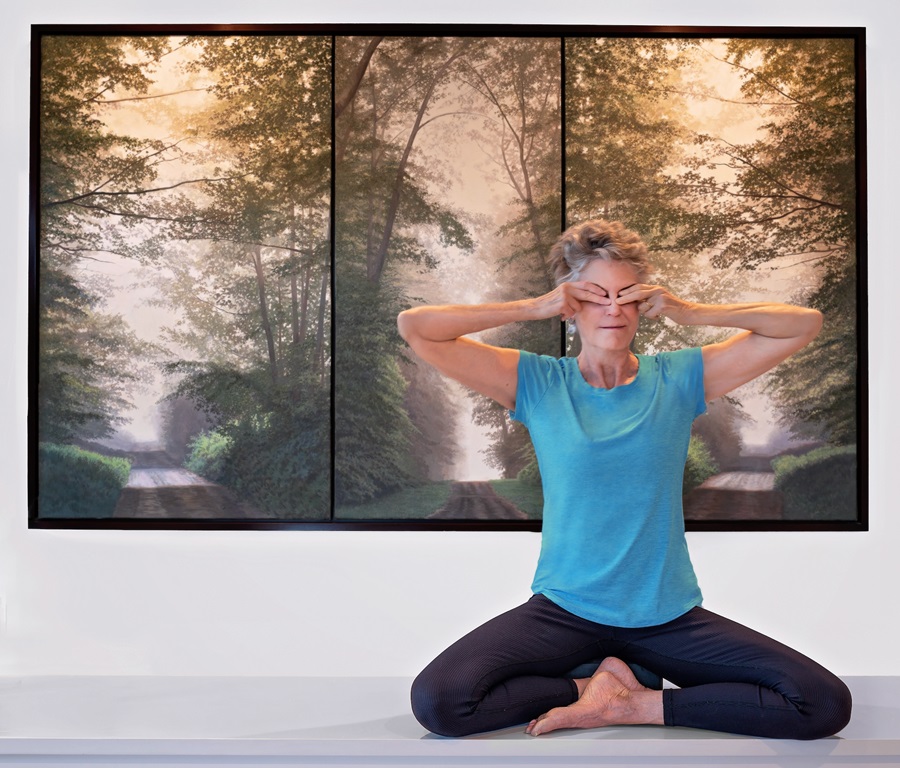There are lots of opportunities to be as busy as a bee during these winter holidays. As we hustle toward the dawn of the New Year, it can be hard to notice that the natural world is actually suggesting something different for us right now. We’re past the solstice, but the winter still stretches ahead, the days are still short and the nights long. We’re being invited into a quieter, more inner-focused time.
The ancient yogis were all about this inner focus. In India, for example, the Upanishads, the Sanskrit writings that accompanied the development of Hinduism — and alongside it, yoga — beginning around 800 B.C.E., went deeper than earlier texts had into philosophy and questions of being. With the goals of increased inner awareness and higher consciousness, yoga was at that time not yet as focused on the body or on asanas, as it now can tend to be.
But the yogis did develop many practices to try to open the way to those goals. They discovered, for one thing, that the breath could be consciously controlled to produce changes in internal experience. Out of this came breath control, known as Pranayama.
Prana means “life force” and ayama means “lengthening, enhancing, and expanding.” So, the yogic practice of pranayama was used to increase one’s vitality and purify the mind. It is a highly developed series of breathing techniques that involve expanding or holding the breath to bring awareness inward and allow a range of internal states.

Modern medicine has caught on to using breath techniques to influence the mind, the body, and emotions. In my practice as a mental health provider — I was a therapist in my previous career of 30 years — I used to teach my clients a very simple calming breath called “square breathing.” For this technique, you inhale for four counts, then hold the breath to the count of four, slowly exhale for four counts, and hold the breath out for four, then inhale for four counts and begin again. After several rounds of this pattern, most people feel calmer and more able to focus.
Short, shallow breaths come when we’re under stress. This exercise brings the breath into the diaphragm, slowing it down and deepening it. The nervous system responds in kind.
Bhramari, or Humming Bee Breath, adds the element of sound to this soothing process. To begin the practice, sit comfortably in a chair or on the floor in a way that lets you feel your spine long and your body relaxed. Try a few rounds of square breathing to help prepare for Bhramari breath.
Now, press the tip of your tongue to the roof of the mouth. The tongue placement draws energy toward the top of the head. Inhale deeply through your nose. Maintain this tongue position throughout the breathing. Exhale through the nose slowly, making a humming sound — this is the bee part — focused in the nasal cavity.
Pause at the bottom of the exhale briefly. Inhale again and on the exhale repeat the humming sound. You can experiment with making the humming sound high- or low-pitched. It is traditionally done with a higher pitch but see what works best for you. Just don’t force the breath.
As you repeat the breathing pattern several times, focus your mind on the buzzing sound and the silence that follows.
To increase the inner focus, you might try closing off your ears with your thumbs. You can cover your eyes, too, with your index and second fingers, though if this feels claustrophobic, it’s fine to leave your ears and eyes uncovered.
After several bee breaths, pause and see how you feel. The vibration of the humming sound stimulates the vagus nerve. This is the longest cranial nerve in the body and contains the main nerve fibers of your parasympathetic nervous system, which controls your digestion, heart rate, and immune system. Stimulating this nerve with the humming vibration turns on what is referred to as the body’s “rest and digest” response, as opposed to the “fight or flight” response handled by the sympathetic nervous system. When you turn on the parasympathetic nervous system, it helps conserve energy and promotes relaxation of the body.
Bhramari can be a nice way to slow yourself down and prepare for meditation. Or just to help maintain your calm during this time of so many social demands and resolutions. You don’t need a lot of time or even a yoga mat to use square breathing or Bhramari (or both, as I’ve described here) — although if family gatherings and other holiday affairs are what make you want to stop for bee breath, you might want to find a private spot to do your humming.
So much of what happens is outside our control. Humming bee breath counters the stressful feelings that arise from that fact. It’s a small way to control our inner worlds. May the power of the breath help you begin a happy, healthy New Year.



